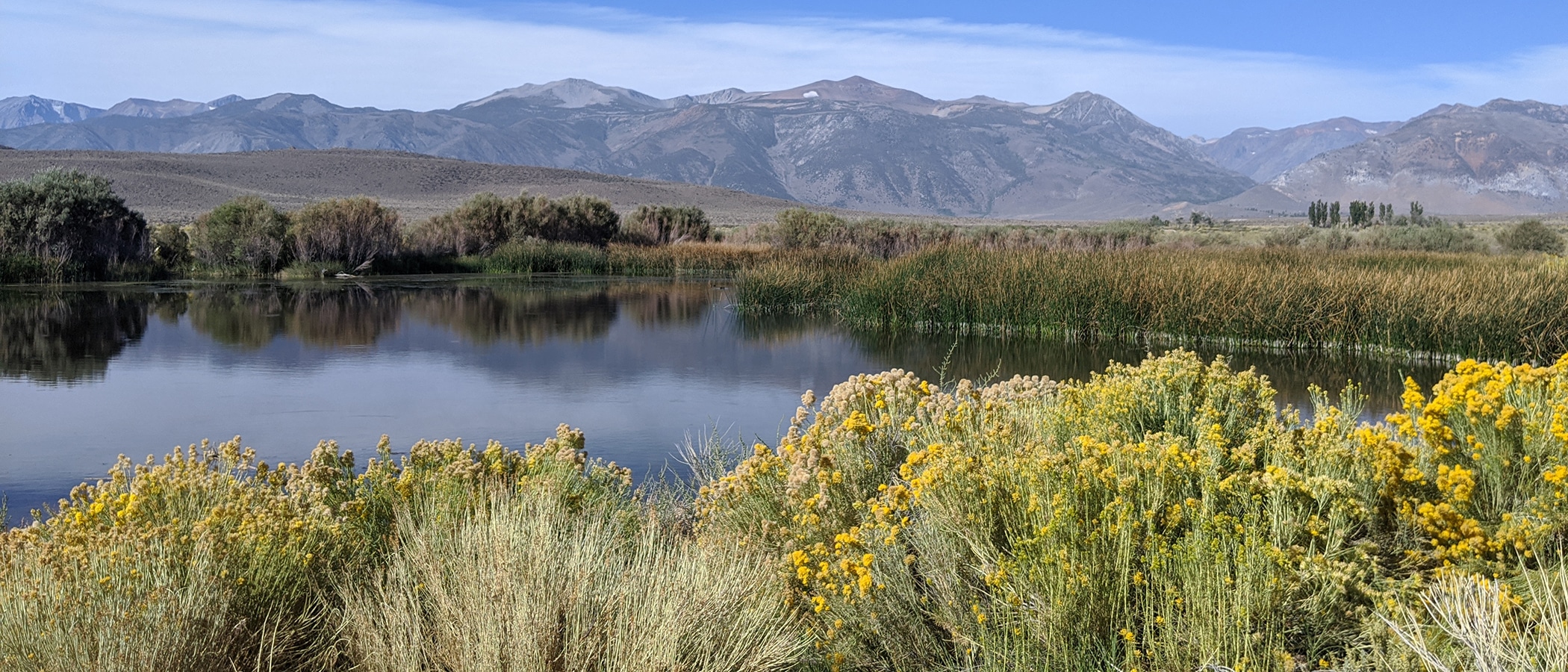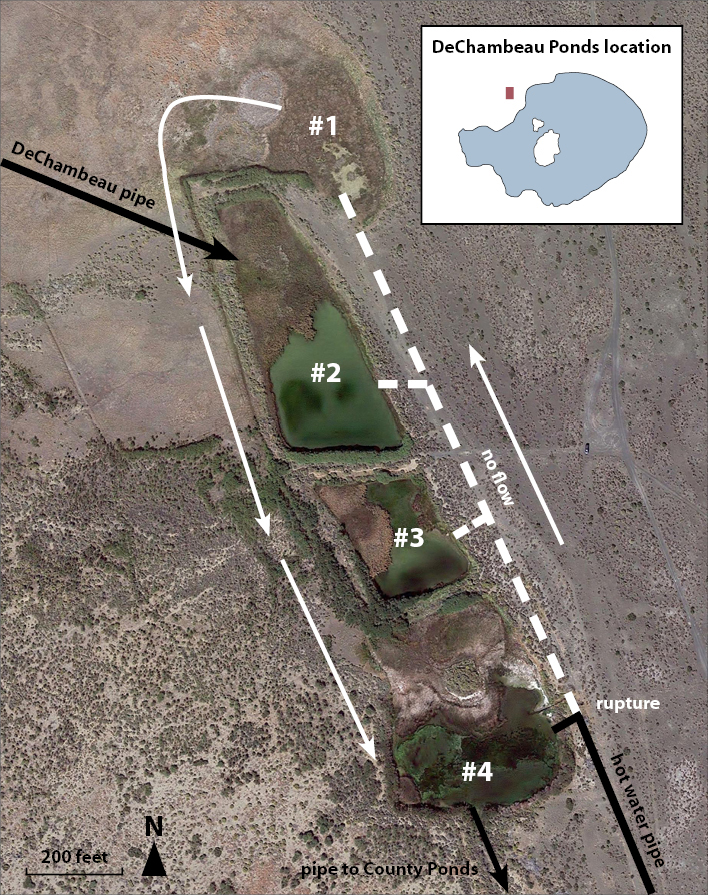
The DeChambeau Ponds are four managed ponds, each between one and two acres in size; combined, they make up about six acres of open water that attract a wide variety of waterfowl and other birds. This year, however, the ponds reached a critical threshold of disrepair that threatens this vital habitat.

A history of collaboration
The DeChambeau Ponds, located near the north shore of Mono Lake, are managed by the Inyo National Forest, which acquired them in 1991 in a leaky state of disrepair. The Mono Lake Committee secured funding in collaboration with the Inyo National Forest, Ducks Unlimited, the California Transportation Commission, and local residents to rehabilitate the ponds, and because of that successful effort they have served as waterfowl habitat for nearly two decades.
Given the tremendous loss of shoreline waterfowl habitat at Mono Lake due to the Los Angeles Department of Water & Power’s historic excessive water diversions, the Committee has been a longtime partner with the Inyo on this project to ensure that the DeChambeau Ponds serve as waterfowl habitat. As part of that effort, in recent years the Committee has been working to help the Inyo quantify water availability and delivery to the ponds.
Gauging the problem
The ponds are designed to receive water from both an on-site artesian hot water well dating back to the early 1900s and a small diversion of Mill Creek water delivered by the Wilson system approximately two miles to the west. The hot, mineral-rich water flows at ⅓ of a cubic foot per second (cfs) and can be delivered to each of the four ponds by way of a metal pipe. However, around 2009 the pipe conveying the hot water began to corrode and leak; by 2018 a rupture in the pipe meant it could only deliver water to the southernmost pond.
In 2000, the Inyo installed a two-mile-long pipeline (the DeChambeau pipe) to efficiently deliver water from the Wilson system to the ponds and, optionally, the adjacent meadow. That pipe can reliably convey water year-round and serve multiple ponds as water cascades from one to the next.
The on-site hot water combined with water from the DeChambeau pipe provides an approximate flow of 1 cfs, which is about 2 acre-feet of water per day, and enough water to keep the ponds at a healthy level. But, as is currently the case, due to dilapidated infrastructure keeping all of the hot water confined to the southernmost pond, slight variations of water in the DeChambeau pipe (literally tenths of a cfs), make the difference between ponds filling and spilling or going dry from lack of spill, evaporation, and water consumption from plants. Unfortunately, low pond levels happened this year as a result of these infrastructure issues and constraints.
A wrench in the plans
Complicating an already complex situation, on September 1 an Inyo National Forest biologist discovered illegal tampering with the infrastructure designed to maintain water levels in two of the DeChambeau Ponds, causing the ponds to drop precipitously. While it is troubling and confusing that someone would seek to damage the ponds, we are glad the Inyo was able to correct the issue, and both ponds have been recovering quickly.
Community working toward a solution
Local residents and community organizations have been concerned about the hot pipe failure and are working toward finding a solution. As part of this effort, the Committee secured a grant to help repair the hot pipe, and the planning needed to fix it is underway with the Inyo as of press time.
Once the hot pipe is repaired and delivering water into all four ponds in conjunction with the water from the DeChambeau pipe, it is expected that all four ponds will fill and stay full once again. After that, there are additional ponds to the south—the County Ponds—that are also designed to receive water from the DeChambeau Ponds that could be revitalized with a little planning and maintenance work.
There is still much to do, but it is hopeful and inspiring to see groups and individuals teaming up with the Inyo National Forest to help revitalize this Mono Basin resource beloved by birds and people alike.
Top photo by Robbie Di Paolo. his post was also published as an article in the Fall 2020 Mono Lake Newsletter (pages 7 & 13).
